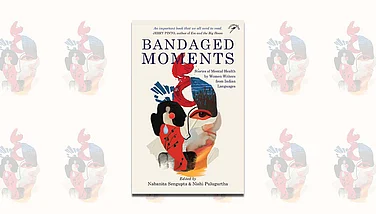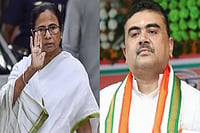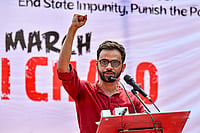It is impossible for any anthology to represent all of Indian literature. Further, it is not surprising that an English anthology should have a disproportionate number of Indo-Anglian writers. But as against 18 items in English-original, so to speak, there are 20 here from the other Indian languages. Of course, Chaudhuri admits, severalmajor languages and literatures are not represented at all. And of many others there isthe merest smattering. But what matters is that the items are well-chosen, and what thereis, is very good indeed. And in any case, as many of the pieces in this anthology bearoutnot least Michael Madhusudan Dutts 19th-century rhapsody in praise of theEnglish that has opened whole worlds of the imagination to himEnglish is toocomplexly woven into our national cultural fabric for the resultant patterns to besusceptible either to nationalist rejection, or to post-colonial caricature.
There is little point, here, in talking about the individual excellence of items inthis anthology. Everyone will recognise some of the pieces, there will be few readers whowill not make pleasant discoveries here: the extract from the Buddhadev Bose novel,Tithidorein a splendid translation by Ketaki Kushari Dysonhad me scouring thepermissions page for publication details; Chaudhuris own translation of the PatherPanchali extract makes one hope that the earlier translation will soon be superseded; itis empowering to ask the question Is there an Indian way of thinking? in thecompany of A.K. Ramanujan, even though ultimately he does, and we should, fail to answerit...
What is the target audience for this anthology? Is it the Western reader? Or is it forIndian readers, who will find here some distinguished and well-translated work by writersin languages other than their own? Given the impossible nature of the enterprise ofassembling an anthology of Indian literature, Chaudhuri has succeededremarkably in focusing attention on the always and inevitably unfinished nature of such anexercise. In an incisive piece in this anthology, Arvind Krishna Mehrotra cites OctavioPaz on the creative function of the critical enterprise: The mission of criticism isnot to invent works but to establish relations between them. ... In this sense, criticismhas a creative function: it creates a literature (a perspective, an order) out ofindividual works.
The really valuable thing, then, that Chaudhuri accomplisheswith the selections,the headnotes, and far-from-least, with his thoughtful Introductionis to enable usto frame the question of what an Indian literaturenot an object but ahorizonmight look like? Clearly the high-pitched Indo-Anglianpost-colonial gush about nations and empires-writing-back is part of the storybutChaudhuri is exactly right when he shows up the inability of thepost-colonialstheorists, writers, drum-beatersto turn theirrampant reflexivity on themselves, and on the cultural politics which renders them andtheir lucubrations stronger and more important than all the other, quieter,work of which this anthology contains such tantalising glimpses. After all, as thisanthology demonstrates, there is much more to Indian life and literatures than the freaksand grotesques of the Babu fictions currently in the global spotlight.


























